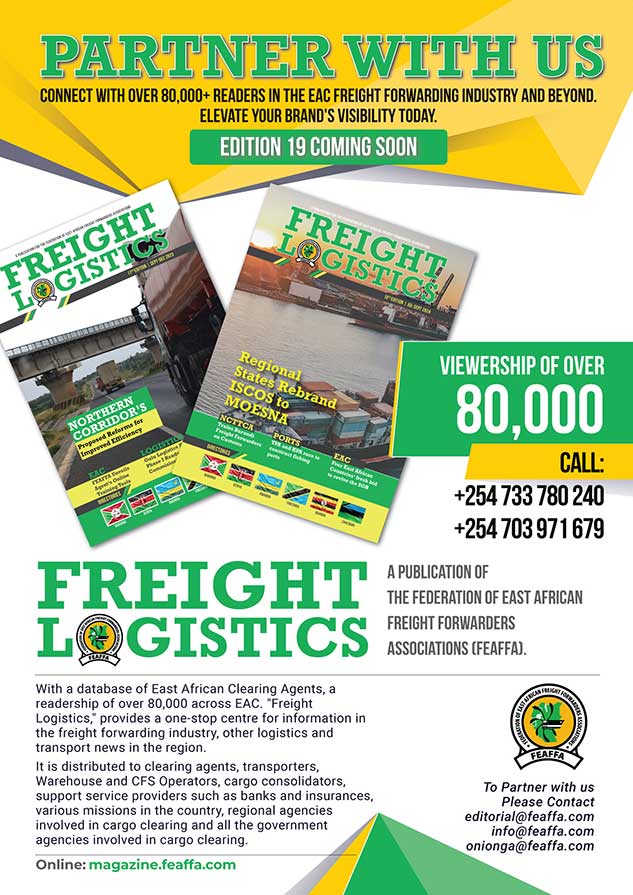Lamu Port South Sudan Ethiopia Transport (LAPSSET) corridor Development Plan has divided the Northern Eastern region into nine growth areas to open up the remote region, which suffered many years of neglect.
These areas include Lamu, Garissa-Bura, Wajir, Moyale, Lokichogio, Turkana, Isiolo-Meru, Archers Post and Mwingi. Each of the growth areas has an identified set of economic activities and investment opportunities that are set to spur economic growth of each.
Isiolo-Meru area will be a logistics centre along the corridor and a resort city; Moyale, Wajir and Garissa-Bura growth areas are mainly set for the Export Processing zones for livestock and animal by-products.
Directly related to the Port is the potential of Isiolo, Lokichogio and Moyale for the construction of Inland Container Depots (ICD), which will increase the transport efficiency and facilitate cross-border trade with the neighboring countries to be linked to LAPSSET Corridor- South Sudan and Ethiopia, Kenya Ports Authority (KPA) responded in an email interview.
“It is expected that the public sector resources will be sourced to develop physical and social infrastructure to facilitate investment. To achieve such accelerated integrated development, the government should ensure existence of an enabling business environment to foster investment,” KPA said.
The First Berth at Lamu Port is now complete together with a container yard with a holding capacity of over 21,000 TEUs. It was to be launched early this year but the outbreak of Covid 19 has thrown spanners into the work. Maersk Shipping Line had already committed to call in the first vessel at Lamu port.
The other supporting infrastructures such as the causeway, aids to navigation, security requirements including fencing of the yard and ISPS Code compliance as well as deployment of staff and equipment had already been done.
The 505KM Lapsset Highway from Isiolo to Moyale was completed over 4 years ago and has significantly transformed transportation enabling faster and cost-effective movement of goods and people along the new corridor.
This is expected to be connected to Lamu via the 536KM Lamu – Garissa – Isiolo highway hence interconnecting the region, spurring regional trade and enhance economic development.
“Though this project has not commenced, we can reliably report that detailed engineering designs are complete and negotiations for funding and construction of the same between Kenya National Highway Authority (KENHA) and a consortium are at an advance stage. In addition, the World Bank has approved a 500 Million USD loan for the construction of the section from Lokichor and Nakadok ultimately linking to Juba South Sudan,” KPA said.
Though the initial target of the new Port is transshipment cargo, it is expected that a second commercial port in the country will also play a complimentary role to Mombasa Port. This shall provide an alternative route or option for shippers who might want to take advantage of the promotional tariff and revive the transport sector.
“We also hope and shall continue to encourage business communities of Northern Region’s Counties of Garissa and Isiolo and of course Lamu to import and export their goods including livestock and fish through this port,” KPA said.
When the project was conceived over a decade ago, the project consultants, in their concept paper, identified six components of the project. In order to become a transportation and commercial hub for the region, Kenya would have to, at a minimum, develop: (a) a commercial port of international standards capable of handling high volumes of containers and other goods traffic; (b) a free trade zone along with the port to foster the growth of trade and commercial activity to make the area a commercial hub; (c) a new beach resort city having facilities of international standards for native and international tourists; (d) an airport capable of being an air hub for the region; (e) a railway network to enable movement of goods from the port and the free trade zone to other parts of Kenya and the countries of the region; and (f) a road highway network to support the capacity of the railway network and provide for greater movement of goods into more areas. Are all this component still in pipelines?
Lamu Port is being developed as a global mega port at a green site. The Port is planned to take full advantage of current shipping trends and global benchmarks. Phase 1 which involves construction of the first three berths with a depth of -17.5 meters and a length of 400 meters. Upon completion, the terminal will have a capacity of 2,000,000 TEUs and 24 million tons.
According to the Port Master Plan, it is expected that part of the cargo demand growth for the Port of Mombasa will be diverted to Lamu as a result of capacity constraint. The shift is expected for commodities that require a lot of space including containers, vehicles and general cargo. No shift is expected for dry bulk and liquid bulk as there will be enough terminal capacity to handle the commodities at the Port of Mombasa.
The Port of Lamu will be developed in phases to match the demand with the capacity. The first three berths which are financed by the Government of Kenya will be complete by the end of the year 2020.
For any feedback, contacts us via editorial@feaffa.com / info@feaffa.com; Mobile: +254703971679 / +254733780240





